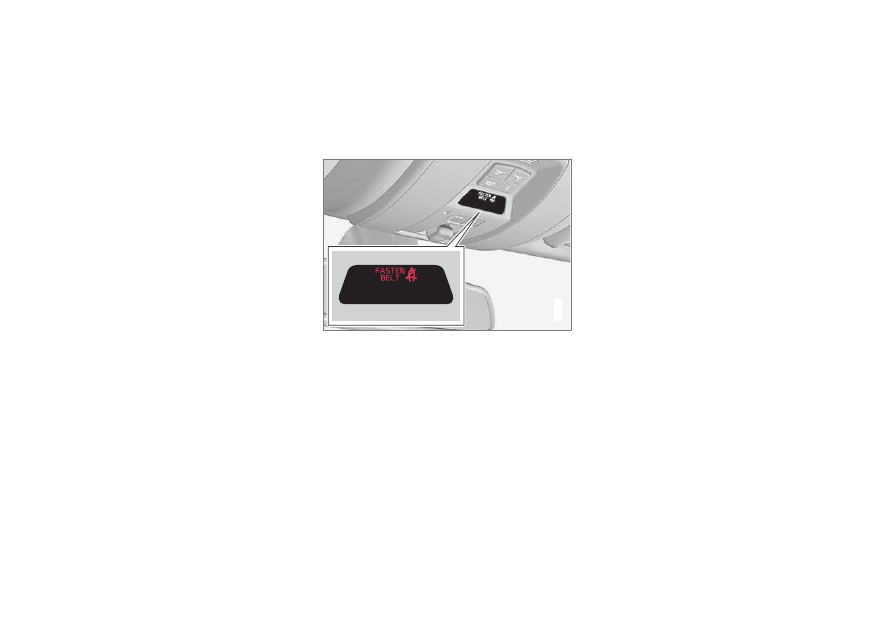Volvo S60 (2018 year). Manual - part 2

||
SAFETY
30
Unbuckling the seat belt
To remove the seat belt, press the red section on
the seat belt receptacle. Before exiting the vehi-
cle, check that the seat belt retracts fully after
being unbuckled. If necessary, guide the belt
back into the retractor slot.
Related information
•
•
Seat belts – pregnancy (p. 31)
Seat belt reminder
The seat belt reminder is intended to alert all
occupants of the vehicle that their seat belts
should be fastened before the vehicle begins to
move.
G017726
Seat belt reminder light in ceiling console
The seat belt reminder consists of an audible sig-
nal, an indicator light near the rearview mirror and
a symbol in the instrument panel that alert all
occupants of the vehicle to fasten their seat
belts (p. 28). The indicator light will be on for sev-
eral seconds from the time the ignition is
switched on. There will also be an audible signal
if the driver's seat belt is not fastened.
If the front seat belts are unbuckled while the
vehicle is in motion, the audible signal and warn-
ing light will be active for a several seconds.
Rear seats
The seat belt reminder in the rear seat has two
additional functions:
•
It provides information about which seat belts
are fastened in the rear seat. A message will
appear in the information display when a belt
is being used. This message will disappear
after several seconds or can be erased by
pressing the OK button on the left steering
wheel lever.
•
It also provides a reminder if one of the
occupants of the rear seat has unbuckled
his/her seat belt while the vehicle is in
motion. A visual and audible signal will be
given. These signals will stop when the seat
belt has been re-buckled or can be stopped
by pressing the OK button.
•
The message
Unbelted in rear seat
will
appear in the information display if one of the
rear doors has been opened.
The message in the information display can
always be accessed, even if it has been erased,
by pressing the OK button to display stored mes-
sages.
Related information
•